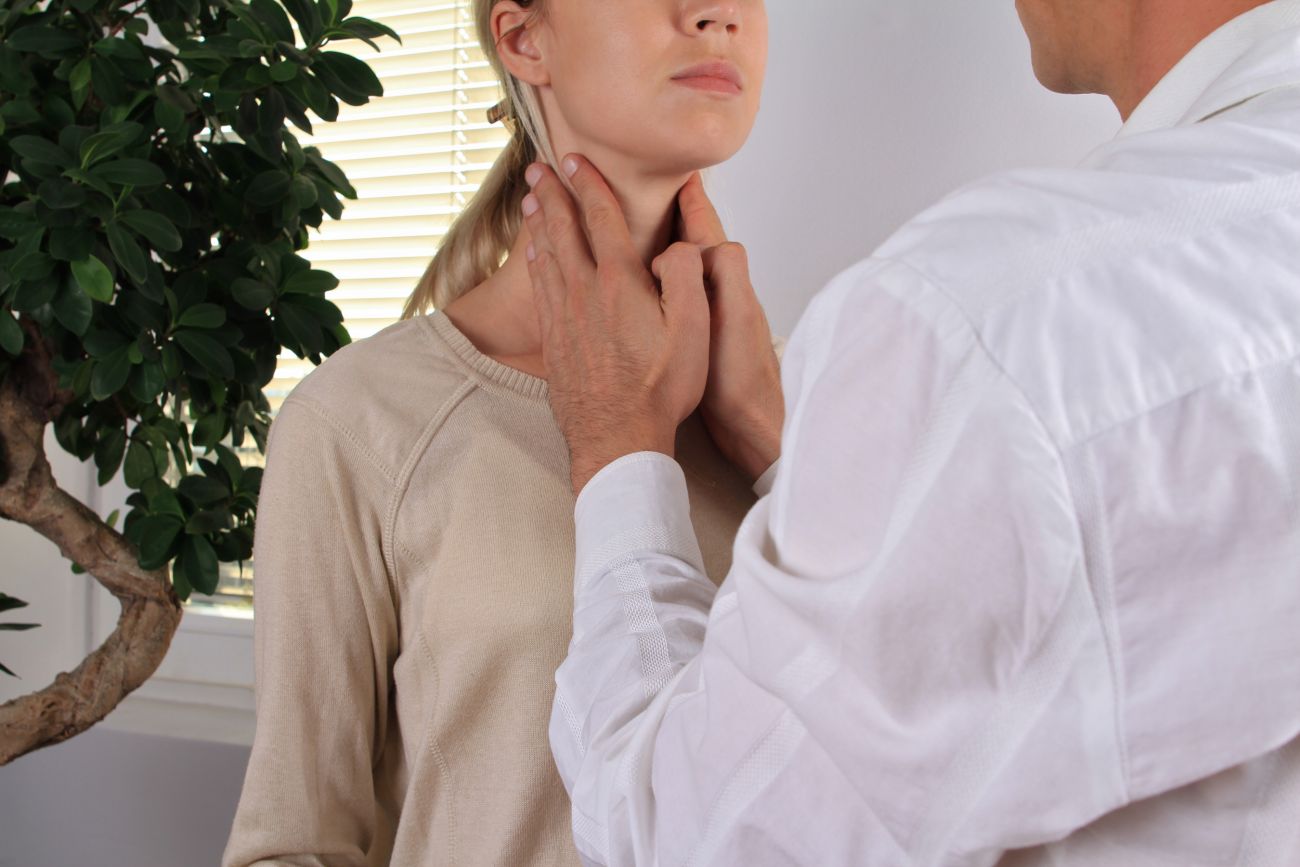What is a thyroid nodule?
A thyroid nodule is a discrete lesion within the thyroid gland that is radiologically distinct from the surrounding tissue. Nodules are common and found in 10 percent of the adult population. Luckily, most of them are benign. The clinical importance of thyroid nodules is the need to rule out thyroid cancer, which occurs in 7-15 percent of cases depending on age, sex, radiation exposure, family history and other factors. For the U.S. population, the lifetime risk of developing thyroid cancer is 1.1 percent. When a thyroid nodule is suspicious – meaning that it has characteristics that suggest thyroid cancer – the next step is usually a fine needle aspiration biopsy (FNAB).
Signs of thyroid cancer
Most thyroid nodules are asymptomatic, non-palpable and only detected on ultrasound or other anatomic imaging studies. The following characteristics increase the suspicion of cancer:
- Swelling in the neck
- A rapidly growing nodule
- Firm, irregular and fixed nodule
- Pain in the front of the neck, sometimes going up to the ears
- Hoarseness or other voice changes that do not go away
- Trouble swallowing
- Trouble breathing
- A constant cough that is not due to a cold
An FNAB helps determine if a nodule is malignant or benign. But about 30 percent of the time, the results are inconclusive or indeterminate – unable to determine if cancer is present. In this case, the recommended follow-up is a repeat FNAB, a core needle biopsy or a lobectomy/thyroidectomy – surgery to remove part or all of the thyroid gland. Once removed, the thyroid nodule is thoroughly evaluated by a pathologist to diagnose or dismiss thyroid cancer.
In large thyroid nodules, 4 cm or bigger, the FNAB results are highly inaccurate, misclassifying half of all patients with reportedly benign lesions. Additionally, Inconclusive FNAB results display a high-risk of differentiated thyroid carcinoma. Diagnostic lobectomy is strongly considered in patients with a significant thyroid nodule regardless of FNAB results.
Never miss another Cancer Talk blog!
Sign up to receive our monthly Cancer Talk e-newsletter.
Understanding the results
To address a significant variability in FNAB results, Bethesda System for Reporting Thyroid Cytopathology was devised in 2007. The system recognizes six diagnostic categories and provides an estimation of cancer risk within each category based on literature review and expert opinion.
Bethesda Diagnostic Category | Risk of Malignancy | Usual Management | ||
|---|---|---|---|---|
I | Non-diagnostic or unsatisfactory |
| 1% to 4% | Repeat FNA with ultrasound guidance |
II | Benign |
| 0% to 3% | Clinical follow-up |
III | Atypia of undetermined significance or follicular lesion of undetermined significance | 5% to 15% | Repeat FNA | |
IV | Follicular neoplasm or suspicious for a follicular neoplasm | Specify if Hurthle cell (oncocytic) type | 15% to 30% | Surgical lobectomy |
V | Suspicious for malignancy |
| 60% to 75% | Near-total thyroidectomy or surgical lobectomy |
VI | Malignant |
| 97% to 99% | Near-total thyroidectomy |
